Join More Than 50,000+ Subscribers and get latest camera news and rumors
NEW CAMERA VIDEOS ON YOUTUBE
Download Our Android App
|
By admin, on December 20th, 2023
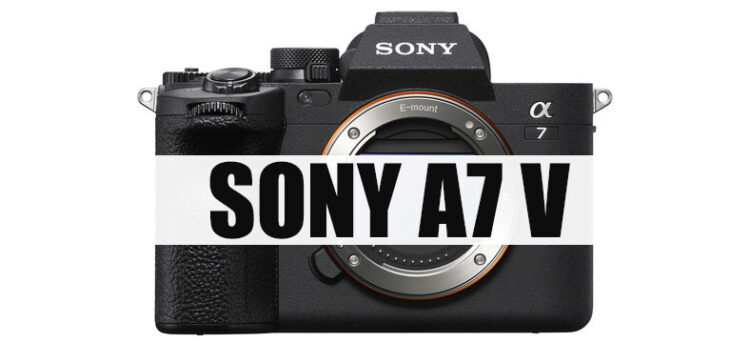
The upcoming Sony A7V camera may feature a 44-megapixel full-frame BSI CMOS sensor. Although the sensor isn’t very new it was published back in April, but the sensor specs fit the upcoming Sony A7V camera profile very well. The sensor features a 16-lane high-speed interface standard developed by Sony Semiconductors. This is approximately 2x faster than the Sony A7R 5 camera’s 61 MP sensor and the Sony a6700 camera’s 26 MP sensor, both of which are limited to 8 lanes. The recently announced 44 MP sensor doubles the speed of data transfer.

The maximum burst speed or continuous shooting speed of the sensor is up to 26 frames per second with all-pixel readout without any line skipping. The sensor is also able to record 12-bit 8K videos at up to 30 frames per second.
It all depends on Sony now. The big question is whether Sony will select the Sony A7 V model to bring these important updates to their ecosystem at a reasonable price tag, or they will wait for further updates like the Sony A7 VI camera body to introduce a 44 MP sensor and 8K video recording capability.
What will Sony bring next? So now it depends on Sony what they will do, they can even bring out the Sony A7 IV R model if they wish to. But, in general, if we look at their current lineup, without further expanding it they have two options: keep Sony’s 33 MP A74 Camera sensor and update rest of the core specification by introducing a dedicated AI chip. Since we already have the BIONZ XR image processor paired with the Sony A7 4 camera, adding a dedicated AI chip inside the Sony A7 4 camera can bring a mid-core update to the market. OR, they can put a Major update by surprising all competitors with a brand new 44MP sensor-based camera and 8K video recording capability.
Here is what a Sony A7 V camera specs would look like if they introduced a 44MP sensor inside the Sony A7 V camera body.
Sony A7 V Specification [Expectations]
44MP Full-Frame Exmor R CMOS BSI Sensor
AI-Based Real-Time Tracking AF System
Up to 26 fps Cont. Shooting with AF/AE
BIONZ XR & AI Processing Unit
4K 16-Bit Raw Output; S-Log3/S-Cinetone
8k 30fps, 4K 120p, FHD 240p 12-Bit Video
8-Stop 5-Axis Image Stabilization
Focus Breathing Compensation
AI Autoframing | User up-loadable Luts
Dual CFexpress Type A/SD Card Slots
The above is the expected set set core specs, we would like to see inside the Sony A7 V camera. We will post an update soon as we get any new information related to the upcoming cameras.
Follow us on our social pages FACEBOOK | TWITTER | INSTAGRAM, If you have time –>see more Sony Alpha Rumor
sony pdf sensor database
By admin, on November 17th, 2023
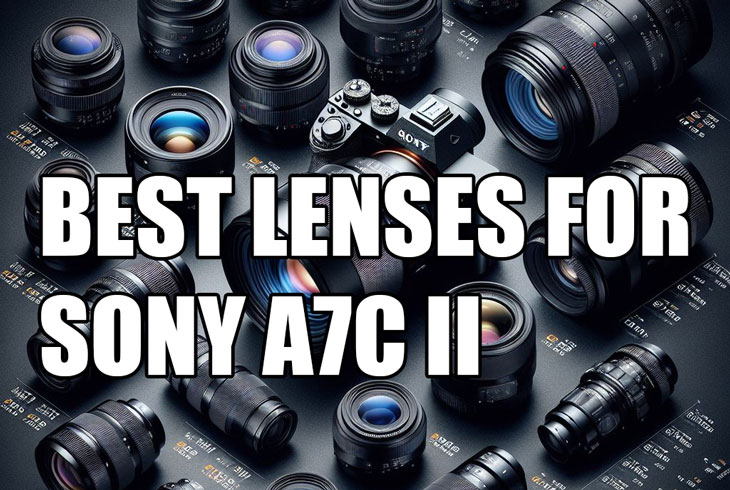
If you are looking for the best lenses for the Best lenses Sony A7C II camera, this article will help you select the right lens for all kinds of photography and cinematography.
These lenses are not only Sony native lenses. We are also including the best third-party lenses available for your camera. All the third-party lenses mentioned here are full-time autofocus lenses with excellent optics, available at an affordable price.
What are the best lenses for the Sony A7C II in 2023 – 2024?
We have selected some of the best lenses for the Sony A7C II camera for the years 2023 and 2024. These lenses, chosen by our expert editors, are capable of properly resolving the 33 MP resolution of the Sony A7C II camera. At the same time, there are AF sync issues when these lenses are used. These are the best lenses available for the Sony A7C II camera, from premium to budget alternatives we have all.
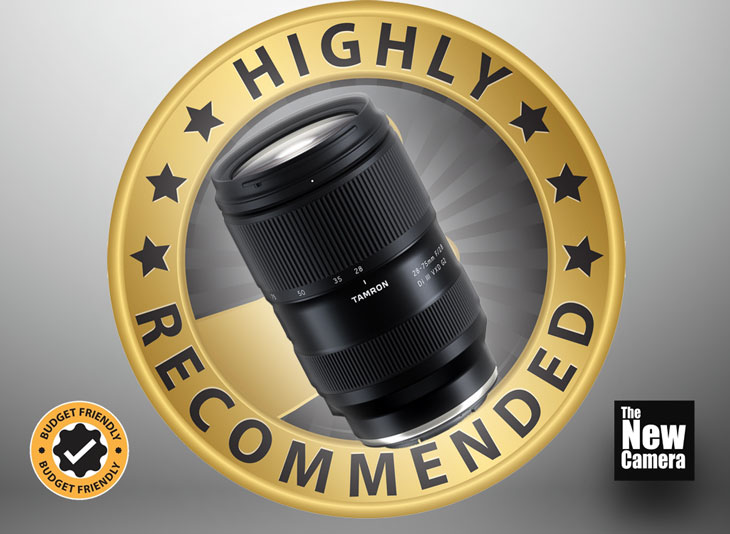
1. The best all-rounder Budget lens from Tamron
Tamron 28 to 75 mm f/2.8 G2. The new Tamron 28-75mm F2.8 G2 lens is much improved compared to the previous generation of Tamron 28 to 75 mm F2.8 lens. The center sharpness of this lens is amazing and it is made for the Sony A7 IV camera by Tamron engineers. As we know, the Sony A7C II camera uses the same 33-megapixel CMOS sensor as the A7 IV camera. It needs a proper lens to resolve the sensor resolution properly, and the Tamron 28 to 75 mm G2 is made for that.
The Tamron 28 to 75 mm f/2.8 is a premium lens under budget. It gives you a constant f/2.8 aperture throughout the zoom range and excellent bokeh. The autofocus is very fast, accurate, and silent. Overall, the lens performance is amazing.
The lens carries very little wide-angle distortion, and color fringing is also very minimal at wide open.
Overall, this lens’s performance is more than perfect at its price range and it’s the perfect all-rounder that will cover 90% of your shooting needs. I highly recommend you get the Tamron 28 to 75 mm f/2.8 lens for your Sony A7C II.
| Pros |
Cons |
- Impressively sharp
- Very multi-purposeful
- Lightweight & compact
- Extended Macro capability
- Constant F2.8 Aperture
|
- Some vignetting wide-open
- Some color fringing
|
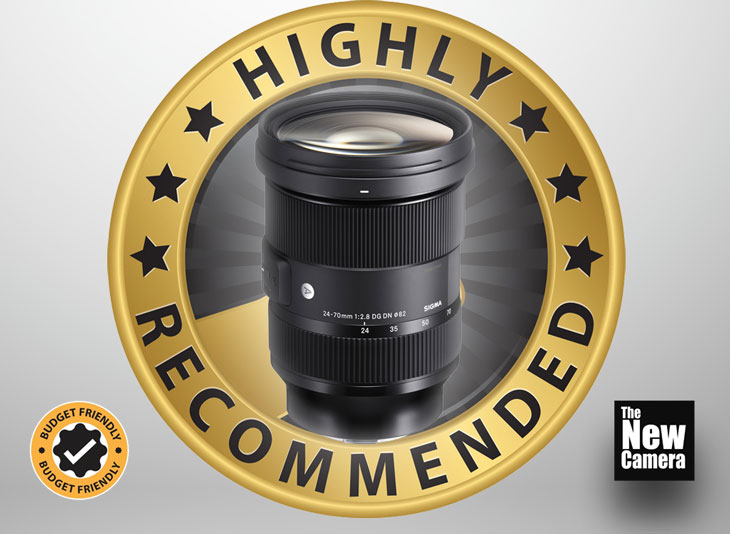
2. The All-rounder Lens from Sigma
Sigma 24-70mm f/2.8 DG OS HSM Art. – When compared to the previous generation of Tamron 28-75mm F2.8 Di III VXD G2 lens, the Sigma was way better in terms of corner sharpness.
When compared to the Tamron 28-75mm F2.8 Di III VXD G2 lens, the major advantage is the wide coverage we are getting: 24 versus 28. This difference seems very minimal, but it is certainly an advantage for those who want to capture a slightly wider scene. The 24 mm seems to be more beneficial.
Another advantage of having the Sigma 24-70mm f/2.8 DG OS HSM Art lens is a slightly smoother bokeh. However, this difference is only visible during the test environment, and in practical uses, the difference is almost negligible.
Now it depends upon a user when both of them are very similar to each other apart from the wider coverage we have in Sigma.
If you’re discussing the weight of these lenses, then the Sigma weighs 835 g and the Tamron weighs 540 g. For those who use their equipment for extended periods, the additional weight can significantly affect a photographer’s hands.
| Pros |
Cons |
- sharpness & image quality
- smooth bokeh
- Professional video quality
- Constant F2.8 Aperture
|
|
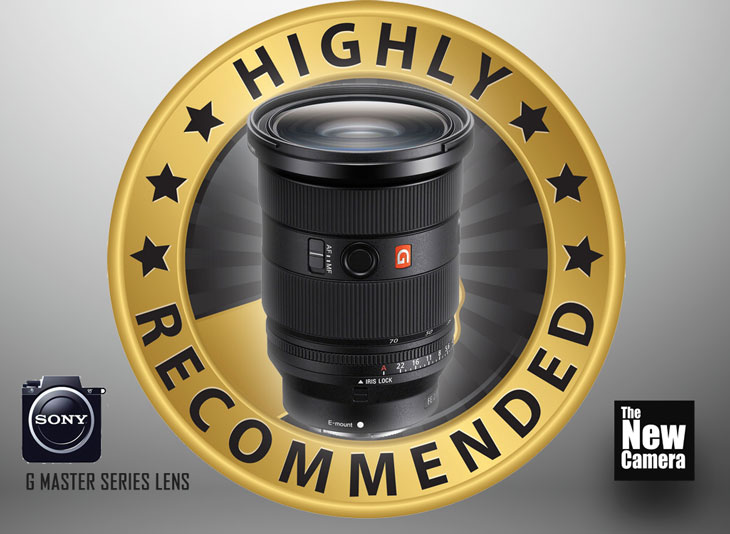
3. Best All-Rounder lens that money can buy
Sony FE 24-70mm F2.8 GM II – This is a new version of Sony’s older generation FE 24-70mm F2.8 GM II lens. With the new version, Sony has made this lens 191 grams lighter than the previous one and 16 mm shorter, making it easier to carry. The overall volume of the lens has also been reduced by 18%, making it more compact and lightweight.
The overall autofocus performance has been considerably improved, and the optical formula is updated to match and support upcoming higher-resolution professional cameras from Sony.
If you are investing your hard-earned money on cameras like the Sony Alpha A1 or Sony a7r5, then without a second thought, you should invest in lenses like the FE 24-70mm F2.8 GM II.
The biggest issue with this lens is its price. It is ultra-expensive, but if budget isn’t an issue for you, this is the best lens your money can buy.
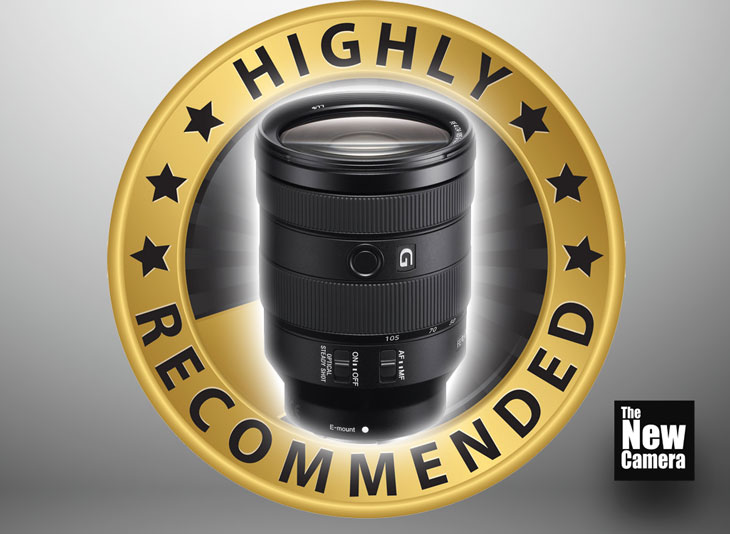
4. Best Sony Lens Lens for Traditional Wedding Photography
SONY FE 24–105mm F4 G OSS Lens – If you’re looking to buy a lens for wedding photography and don’t have the budget for lenses like the 24-70mm f/2.8, and you don’t want to buy Third Party Lenses like Tamron or Sigma lenses, you might consider a Sony-made lens for your camera. A budget-friendly option could be the FE 24–105mm F4 G OSS Lens. The “OSS” stands for Optical SteadyShot, which is Sony’s image stabilization system.
The positive side of this lens it’s made by Sony, and it delivers top-notch professional image quality due to the types of optics used inside. The sharpness from the center to the edge of the lens is amazing, and this sharpness is maintained throughout the zoom range, starting from 24mm and going up to 105mm.
The lens feels rock solid in your hands, and the focus speed is very fast and accurate. The lens uses a hybrid stepping drive motor for silent and fast autofocus. Whether you want to shoot portraits or landscapes, this lens is very versatile.
However, there are a few downsides to this lens. Since it is limited to an F4 aperture, it may not be suitable for extremely low light conditions. At the same time, you won’t get the amount of background blur that you generally get from a 2.8 aperture lens.
Even though it’s an F4 lens, it’s not very cheap. If you don’t mind buying third-party lenses, it’s recommended to get the Tamron 28-75mm f/2.8 lens over this one. If you’re not interested in the Tamron brand, you can go with the Sigma 24-70mm f/2.8. Either of these two will give you better background blur and lowlight performance compared to the 24-105mm F4 lens.
| Pros |
Cons |
- Super versatile & useful focal range
- Premium-level image quality
- Extremely sturdy & weather-sealed
- Pretty lightweight for its focal range
|
- Not superb in low light
- Not cheap
|
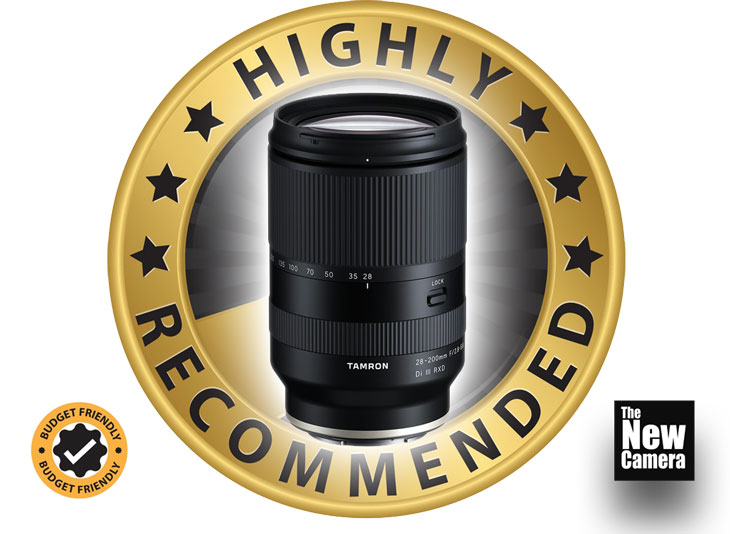
5. Best Everyday Zoom Lens for Sony A7C II
The Tamron 28-200mm F2.8-5.6 is a perfect lens for travel photographers who want an all-in-one solution for the Sony A7C Mark II camera. If you need a lens that covers the entire range and you don’t want to change your lenses frequently, then the Tamron 28-200mm lens is made for you.
This lens is highly recommended for beginners. If you want to shoot portraits, wildlife, landscapes, and even macro photography, this lens has you covered. It’s a kind of all-in-one lens that meets 99% of your shooting needs or requirements you have from your camera. It’s a great choice for those starting in photography.
The Tamron 28-200mm F2.8-5.6 Di III RXD lens features an RXD stepping drive autofocus motor inside it, and the lens also has a Dust and Moist resistance design, so you can use the lens in adverse weather. Overall, the performance of this lens is very impressive, especially considering its wide aperture.
This lens is specifically designed for travel photographers who do not want to carry multiple lenses like the Tamron 28-75mm or 70-180mm.
The only visible drawback of this lens is that it doesn’t have a fixed aperture. At 28mm, you are getting up to F2.8, but this changes as you zoom in. Despite this, it is still a quite decent lens for photographers who want an all-in-one solution.
| Pros |
Cons |
- Impressively sharp image quality
- Lightweight & travel-friendly
- Super multi-purposeful & versatile
- Very reasonably priced – top value
|
- ·Aperture isn’t fixed, So not good for Video
- Not Recommended for Low-Light Photography
|
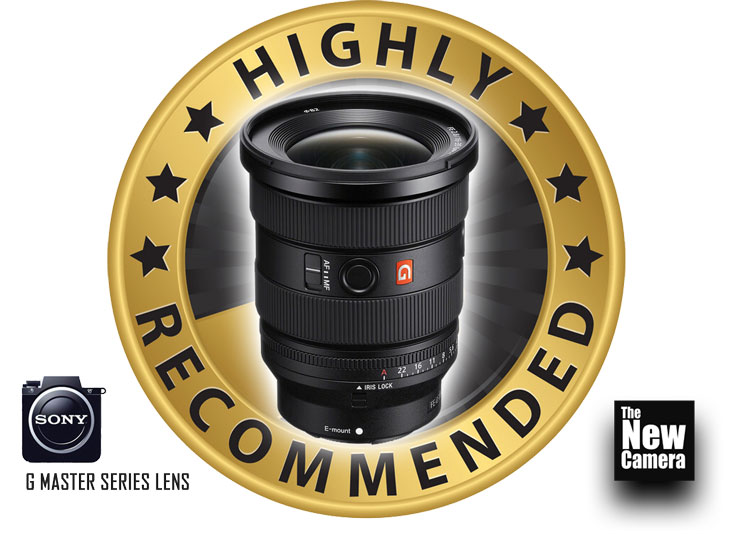
6. Best Ultra Wide Zoom Lens For Sony A7C II
Sony 16-35 F2.8 GM II – If you’re seeking a professional-quality wide-angle lens and the price isn’t a concern, then the Sony 16-35mm F2.8 is indeed one of the best options your money can buy for your Sony A7C camera.
We all know that Sony 16 to 35 mm is part of a g master series and the G master series of lenses is known for delivering exceptional image quality without any issues at the same time G master lenses are typically weather saved so you can use them in adverse weather condition without having a second thought in your mind
The other most important feature of this lens is the constant of 2.8 maximum aperture throughout the focal length with the help of f2. 8you can use this less in extremely breast low light conditions to get and perfect output at the same time to resolve super high resolution sensor the lens is designed with 2x extreme aspherical lens elements
| Pros |
Cons |
- Razor-sharp from edge to edge
- Very fast & accurate autofocus
- Stunning & smooth bokeh
- Great low-light performance
|
|
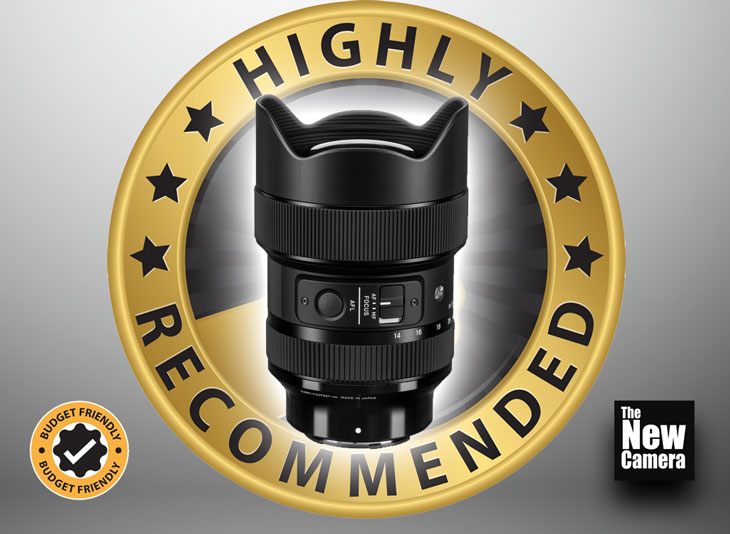
7. Ultra Wide Zoom Lens For Sony A7C II
Sigma 14-24mm F2.8 – The Sigma 14-24mm F2.8 is one of the most popular lenses for Sony cameras, even more popular than the Sony 16-35mm F2.8 due to its price range and the types of optical performance. One thing you’ll notice is that the coverage provided by Sigma at the wider end is more than that of Sony. You’re getting 14mm to 24mm, which is far superior and better than Sony’s 16-35mm coverage, and you’re getting it at a 00 lower price tag.
The image quality of this lens is outstanding. Throughout its zoom range, you get amazing sharpness, and the lens becomes extremely sharp when you stop down to F4.
This lens is highly recommended for astrophotography purposes, and due to its ability to resolve even higher resolution sensors perfectly, you can also use this lens for content creation purposes due to its wide coverage. It can also be used for landscape, architecture, and wedding photography.
If you wish to buy an ultra-wide-angle zoom lens, then my recommendation would be to get the Sigma 14-24mm lens instead of the Sony 16-35mm. Why would you want to spend more money and get less range when the optical performance of both lenses is quite phenomenal? Instead of getting a shorter focal length by paying a higher price, consider the Sigma lens.
| Pros |
Cons |
- Incredibly sharp even wide-open
- Great for astrophotography too
|
|
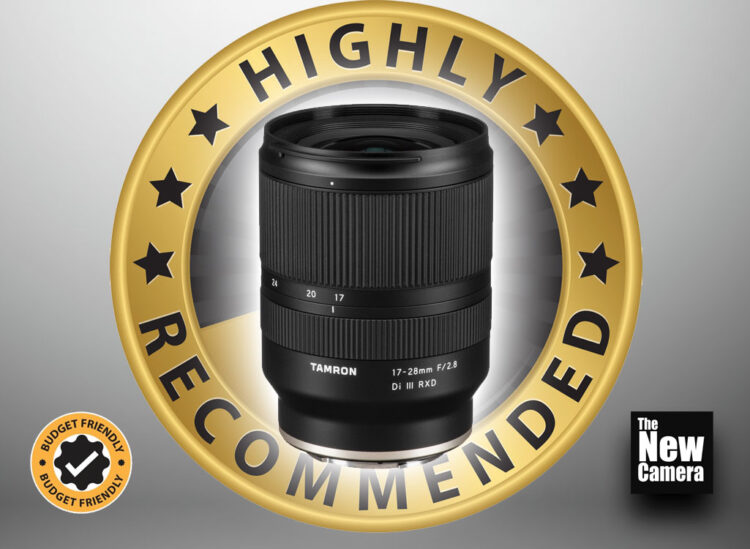
8. Best Budget Ultra Wide Zoom For Sony A7C II
Tamron 17-28mm F2.8 Lens for Sony – When it comes to the most sold ultra-wide-angle lens for Sony cameras, without a doubt, it’s the Tamron 17-28mm F2.8. It’s clear from its price why it’s so popular among Sony users.
One thing you must understand is that it’s not only popular for its price, but the optical performance it offers is also very good. If you’re using cameras like the Sony A7C II, you won’t face any resolving power issues with this lens. If you’re planning to buy a Sony A7R series camera shortly or any high-resolution Sony body, then it’s recommended to go with the Sigma 14-24mm since it’s optically more mature and exhibits exceptional resolving power.
If you want to create content with this lens, it’s one of the best lenses available for creating vlogs with the A7C II camera. At the same time, due to its F2.8 aperture, the background blur is also very smooth.
Overall, this lens is the most-sold Sony ultra-wide-angle zoom lens from a third-party maker, not only due to its price. Keep in mind, it’s also due to its optical performance at this price range. So overall, if you’re looking for a budget ultra-wide-angle zoom lens, this one is made for you.
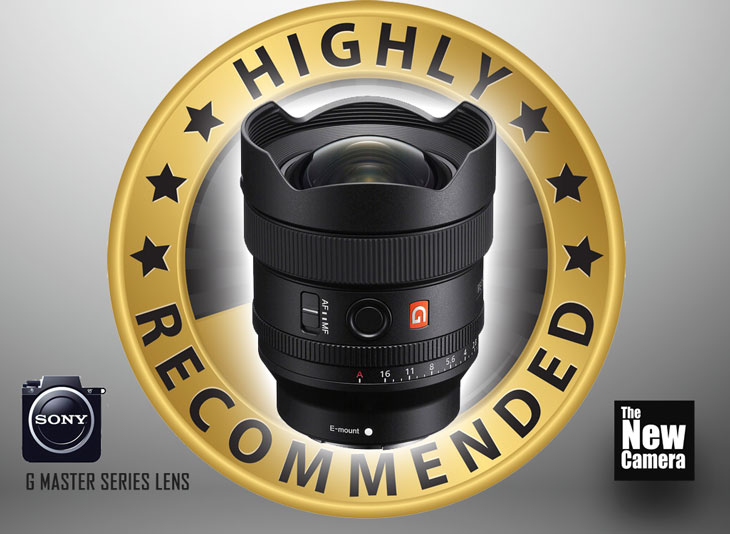
9. Best Ultra Wide Prime Lens for Sony A7C II
Sony 14mm F1.8 (B&H Store | amazon.com) – If you’re considering purchasing the Sony 14mm F1.8 lens for your A7 C Mark II camera, this is undoubtedly the lens you need. However, keep in mind that it’s part of the Sony G Master series, which means it’s quite expensive. Without a doubt, this is the best 14mm prime lens available for your A7 C2 camera, but it comes with a hefty price tag. In the next paragraph, we’ll discuss the budget alternatives for this lens. If you’re on a tight budget, we’ll explore the best options for you. But before that, let’s discuss the applications of this lens.
The 14mm prime lens is highly recommended for content creators who often hold the camera in their hands. This is the best ultra-wide-angle prime lens designed specifically for content creators. It can also be used for astrophotography due to its sharpness. Additionally, this lens is suitable for architectural photography or capturing creative wide-angle shots during weddings. However, if you’re a high-profile content creator who doesn’t worry about budget and focuses on quality output for daily lifestyle vlogs, this is the perfect lens for you.
| Pros |
Cons |
|
The smallest and lightest 14mm
Ultra-sharp edge-to-edge
Stunning low-light performance
Practically optically flawless |
None
|
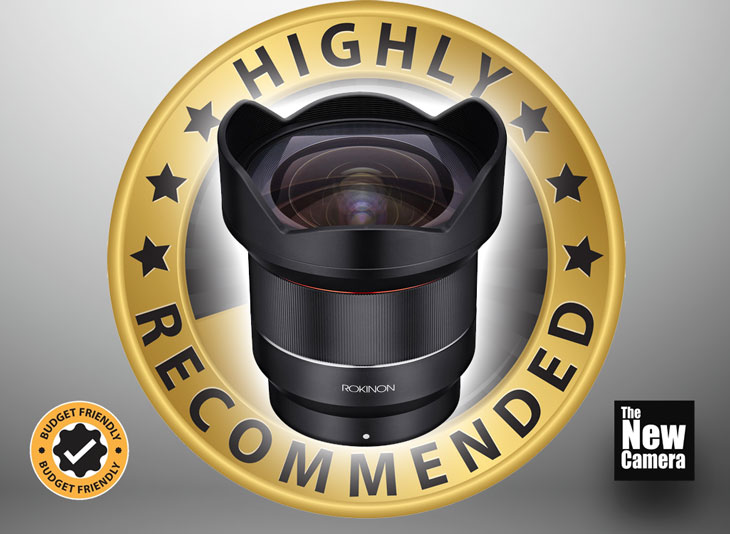
10. Best Budget Ultra Wide Prime Lens for Sony A7C II
Let’s discuss a budget alternative to the Sony 14mm F1.8 GM lens. The best budget alternative to the 14mm Sony lens is the Rokinon AF 14mm F2.8 lens, which is available for only $499 (amazon.com). However, supply at this price is very limited.
The most noticeable difference between the two lenses is the price. With the Rokinon lens, you’re saving more than a thousand dollars. Another difference is that the Rokinon 14mm lens features an F2.8 aperture, while the Sony lens has a brighter F1.8 aperture. However, with wide-angle lenses, you won’t notice much difference in terms of aperture.
14mm F2.8 Lens is Highly Recommended for Content Creators those who are looking for an budget handheld ultra-wide prime lens
In terms of sharpness, the image quality of the Rokinon lens is very good when used with the Sony A7 III or A7 IV camera. It resolves 33 MP resolutions perfectly. So, if you use this lens with the Sony A7 C2 camera, you’ll get very good results. However, if you have a camera like the Sony A7R V, which has more than 60-megapixel resolution, you might need the Sony 14mm F1.8 lens to resolve the resolution properly. Up to 33 megapixels, this lens works perfectly well. The images are very clear and the distortion of this lens is very well controlled. Considering its price, this is one of the best lenses available for your camera.
Quick Guide Best Budget lenses for Sony A7C II
The Budget best all-in-one lens for the Sony A7C II
Tamron 28 to 75 mm f/2.8. This lens offers excellent center sharpness, and the new G2 version upscales the overall quality of the lens to a next level. Whether you are shooting portraits, landscapes, or architecture, this is the best lens made for your A7C II camera.
Now, let’s talk about the best zoom lens for the Sony A7C II camera.
The best zoom lens for travel photography
Tamron 28 to 200 mm f/2.8 to 5.6. If you do not want to change your lens every time and want a lens that covers a perfect focal range, allowing you to zoom and capture distant objects, then this lens is perfect for you.
This is a budget zoom lens with excellent optical performance and is a perfect companion for travel photographers.
The best budget portrait lens for the Sony A7C II
SONY 50 mm f/1.8. You might wonder why I am recommending a 50 mm lens instead of an 85 mm lens. If you have a larger budget and require the perfect focal length of an 85 mm portrait lens, then you can certainly opt for the 85 mm. However, in today’s environment where we often work in closer spaces such as offices, clients’ homes, or studios, the 50 mm f/1.8 lens is more practical for portrait shoots than an 85 mm lens.
By admin, on November 17th, 2023
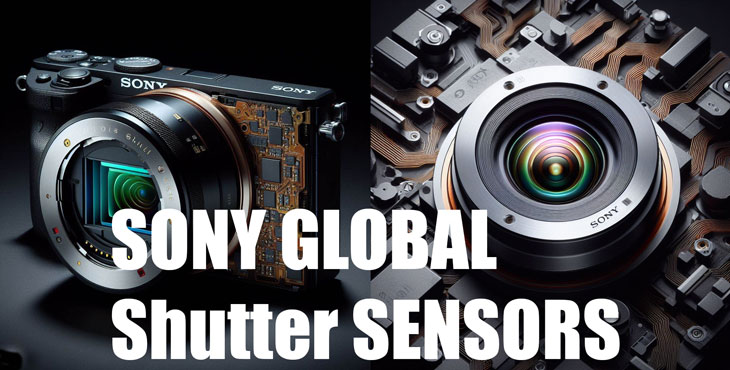
Although Sony has used a 24.6 megapixel full-frame CMOS sensor in their Sony A9 Mark 3 camera, they already have a variety of global shutter sensors in their lab for several years. These range from the M4/3 format sensor to APS-C, and medium format. In all these categories, they have CMOS sensors. Currently, these are labeled for industrial use, but if they decide to use them in commercial cameras, they can simply make them ready.
1. Sony’s IMX661 – 127 Mp Medium Format Global Shutter Sensor
Sony’s IMX661 is indeed a large format CMOS image sensor with a global shutter function and the industry’s highest effective pixel count of 127.68 megapixels. It has a diagonal size of 56.73mm, making it even larger than the medium format sensor. This sensor is currently labeled for industrial use, but Sony can use it in consumer cameras if they decide to do so, yes few tweaks are needed.
More Details about IMX 661 in this PDF
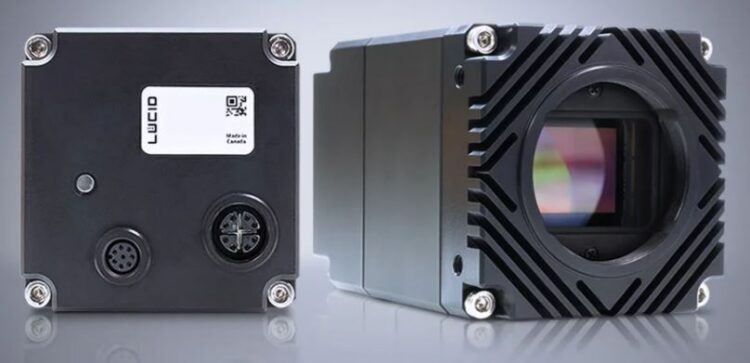
2. Sony IMX342 APS-C 31Mp Global Shutter Sensor
We have spotted the Sony 31 MP Sensor with a global shutter back in 2018. The Sony IMX342 is a 31.49 megapixel APS-C CMOS active pixel type solid-state image sensor with a square pixel array. This chip features a global shutter with variable charge-integration time. It operates with analog 3.3 V, digital 1.2 V, and interface 1.8 V triple power supply, and has low power consumption.
Currently, this sensor is being used in Atlas10 industrial cameras. If Sony decides to use it in commercial cameras, they can simply make it ready. The maximum frame rate that this sensor allows is 35 frames per second, which is indeed very decent compared to the existing cameras of today.
More Details about IMX 342 in this PDF
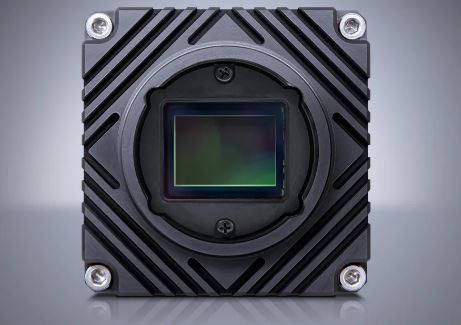
3. IMX492 M4/3 format 47Mp Sensor
The Sony IMX492 is a Micro Four Thirds format Global Shutter CMOS sensor with 47 megapixels. Here are some key details about this sensor.
- It uses 2.315µm pixels
- The sensor can run up to 24 frames per second in 10 bit over the SLVS-EC interface or 13.7 frames per second with MIPI (CSI-2).
- It is available in both color (IMX492LQJ) and monochrome (IMX492LLJ)*versions.
- The monochrome version of the sensor has a Quad-Pixel Binning HDR function.The sensor supports both SLVS-EC with up to 8 serial data output or CSI-2 with 2 or 4 serial data output per channel.
This sensor is currently being used in industrial cameras, but Sony can use it in consumer cameras if they decide to do so. I wish one of the upcoming Panasonic microphone third format cameras should have this sensor inside it.
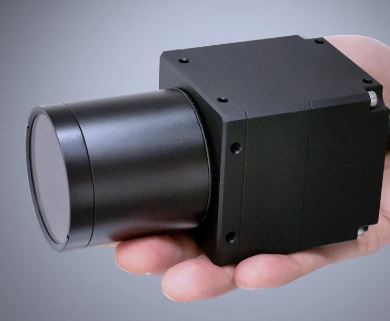
4. IMX540 M4/3 format 24.5Mp Sensor
Sony also has another Micro Four Thirds format-based sensor with a global shutter. Its resolution is slightly lower at 24.5 MP, so we can expect its low-light performance to be better than the 47 MP M4/3 format sensor, the IMX492. Let’s look at some details about this sensor:
– It is a 24.55-megapixel sensor
– The sensor has a diagonal size of 19.3mm (Type 1.2)
– It uses 2.74µm pixels
– The sensor can run up to 23 to 34 frames per second
– It features a global shutter function with variable charge integration time
– It operates with analog 3.3, 2.9V, digital 1.1V, and interface 1.8V quadruple power supply
– It is designed for high-end FA and ITS cameras using high-speed bandwidth.
This sensor is currently being used in industrial cameras, But I wish to see the IMX 540 in Panasonic M4/3 formt-based GH series camera. Let’s see.
Get LIVE RUMORS –> FACEBOOK | TWITTER | INSTAGRAM to to get live news — > –>see more Latest Camera News
By admin, on November 14th, 2023
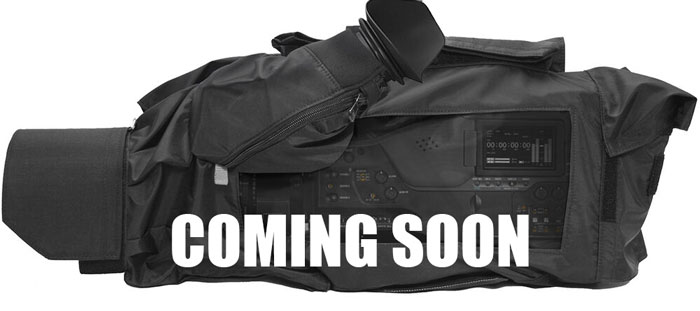
Although The name of the camera isn’t confirmed yet take a look at what Source has to say about the upcoming Pro Video camera from Sony
PXW-Z750 users will be delighted with the larger sensor version, which will be positioned next to XDCAM 6K and CineLine. Global shutter, full-frame oversampling/S35 point-to-point DCI&UHD 4K/120p, S35 oversampling FHD/240p, does not support X-OCN internal recording.
The 15+ stop IQ of FX9 is maintained, but the base ISO is raised to F55-level ISO2000, and the second ISO is set to 6400, which is slightly higher than FX9’s 5120. It seems to be a stage scene with PXW-Z750 and PXW-FX9M2 dual broadcast cameras.
However, I don’t think Sony should promote a global shutter-based FX9 at the time when the BURANO series is Available.
Stay tuned we will bring more updates as soon as they become available to us
The Post “Details about Sony Upcoming Professional Video Camera” was first appeared on thenewcamera.com
source
By admin, on November 7th, 2023
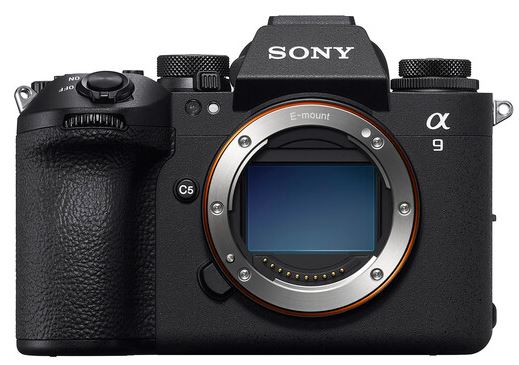
Sony has finally announced the Sony a9 III camera, which is the world’s first camera to feature a global shutter sensor. The camera boasts a brand new 24.6-megapixel full-frame stacked sensor. With the help of dual BIONZ X image processors, which are 8 times faster than the predecessor Sony A92, is up to 120 frames per second with full-time autofocus and auto-exposure support, and blackout-free shooting. The Sony A9 Mark III camera is the world’s first camera to feature a maximum shutter speed of 1/80000th of a second and flash sync at any shutter speed. The overall design of the camera, including the hand grip, is made for professionals. The camera’s electronic viewfinder has a refresh rate of 120 frames per second, and on the rear side, we have a four-axis multi-angle LCD screen, the same as that seen in the A7R5
Sony A9 III Specifications
- 24.6MP Full-Frame Global Shutter Sensor
- Up to 120 fps Cont. Shooting with AF/AE
- Pre-Capture Function; Speed Boost Button
- Flash Sync at up to 1/80,000 Sec.
- 4K 120p 10-bit Video
- S-Log3 & S-Cinetone
- 759-Point Phase-Detect AF with Tracking
- 8-Stop 5-Axis In-Body Image Stabilization
- 9.44m-Dot EVF with 240 fps Refresh Rate
- 3.2″ 2.1m-Dot 4-Axis Touchscreen LCD
- Dual CFexpress Type A/SD Card Slots
The Alpha 9 III camera is available for pre-order on Nov. 8, 2023, at a variety of Sony’s authorized dealers, for a suggested retail price of USD 5,999.99
Get a Sony A9 Mark III camera from B&H Store
Sony A9 Mark III press release
Sony Electronics Releases the Alpha 9 III; the World’s First Full-Frame Camera with a Global Shutter System
The next-generation Alpha 9 III captures all decisive moments with up to 120 frames per second of high-speed shooting, distortion-free and blackout-free images, and flash sync at all shooting speeds
SAN DIEGO- Nov. 7, 2023 – Sony Electronics today introduced the Alpha 9 III cameras equipped with the world’s first full-frame global shutter image sensor.
The newly developed global shutter image sensor exposes and reads all pixels simultaneously, unlike a rolling shutter sensor that records images sequentially from the top row of pixels to the bottom. The impressive global shutter full-frame image sensor enables the camera to shoot at burst speeds of up to 120 frames per second with no rolling shutter distortion or camera blackout. This innovative sensor is combined with Sony’s most advanced AF (autofocus) system to date – boasting AI autofocus with up to 120 times AF/AE focus calculations per second. With the added ability to sync flash at all shooting speeds, the Alpha 9 III opens up a new world of possibilities for professional photographers to capture every decisive moment.
“The Alpha 9 III full-frame camera is a landmark achievement for the industry,” says Yang Cheng, Vice President, of Imaging Solutions, Sony Electronics. “Designed with the needs and demands of professional photographers in mind, every single update to this camera – from the sensor to even the size to the button layouts and menu functions – has been made to address specific input and feedback from our community. We have listened and are thrilled to bring the new capabilities of the Alpha 9 III to market—capabilities which allow photographers to capture things they’ve never been able to capture before.” Cheng continued, “For professionals everywhere, they can achieve even more dynamic expressions when the Alpha 9 III is combined with our rich lineup of lenses, in particular with the new 300mm F2.8 G Master OSS – the world’s lightest large-aperture telephoto lens.”
Features of the Alpha 9 III Full-Frame Camera
- A New Dimension of Still Image Performance Created by the World’s First Global Shutter Image Sensor
The Alpha 9 III is equipped with the newly developed, world’s first global shutter full-frame stacked CMOS image sensor with approximately 24.6 effective megapixels and built-in memory. Combined with the latest image processing engine BIONZ XR®, the Alpha 9 III achieves blackout-free Continuous Shooting Speed with AF/AE tracking of up to approximately 120 fps. The Alpha 9 III is supplied with high-density focal plane phase-detection AF. A designated AI processing unit uses Real-time Recognition AF to recognize a wide variety of subjects with high precision. By combining the high-speed performance of up to 120 fps with highly accurate subject recognition performance, it is possible to easily photograph scenes and moments that cannot be seen with the naked eye. The AI processing unit in the Alpha 9 III supports movies as well as still photography with accurate subject form and movement recognition. Real-time Recognition AF and Real-time Tracking provide a significant improvement in human eye recognition performance, allowing the camera to automatically recognize, track, and focus on the eyes of a specified subject. The Alpha 9 III is equipped with 8.0 stops of optical 5-axis in-body image stabilization, allowing for high-quality image rendering.
Shutter speed is freed from the limitations of conventional mechanical shutter image sensors and achieves a maximum shutter speed of 1/80,000 second (1/16,000 second during continuous shooting)vii, making it possible to capture at high speed without any distortion. When a compatible Sony flash is attached, such as the HVL-F60RM2 and HVL-F46RM (sold separately), it is possible to synchronize the flash and take pictures at all shutter speeds up to 1/80,000 second. Previously, if the user released the shutter at a speed faster than the flash’s synchronization speed, the amount of light would drop sharply. Still, with the full-speed flash synchronization function, it’s now possible to photograph scenes that could not be easily captured with conventional technology. Also, when shooting stills or movies under LED lighting, the Hi Frequency Flicker function can significantly reduce high-frequency flicker problems by allowing the shutter speed to be finely adjusted to match the flicker frequency while viewing the monitor.
The Alpha 9 III features selectable release lag modes which allows the user to prioritize release lag or viewfinder/monitor displayix. The newly developed Pre-Capture function allows the camera to continuously record up to one second before the shutter is released, making it easy to capture moments that would otherwise be missed. When selected, the Continuous Shooting Speed Boostx function allows the user to change to a faster, preset speed set by the user at any time during shooting, and enhanced burst stamina ensures that important moments are reliably captured due to a large buffer memory and increased overall system speed allow up to approximately 390 Fine JPEG images xi to be captured in one continuous 30 fps xii burst.
Customizable focus areas have been expanded to include from XS to XL in addition to the previous S, M, and L sizes. The Preset Focus/Zoom function allows preset focus and zoom settings to be memorized in the camera for quick recall when needed. In addition to the existing custom white balance frame size, the user can now select other sizes as needed which allows for fine white balance adjustment after an image has been composed. The Alpha 9 III has upgraded features such as the latest AF algorithms to achieve high AF precision down to light levels as low as EV-5 in AF-S mode (ISO 100 equivalent, F2.0 lens), AF tracking for continuous shooting at F22xiv and a composite RAW shooting function that gives the ability to combine multiple consecutive images into a high-quality composite.
2. Advanced Video Performance Without Distortion
The global shutter image sensor provides distortion-free image expression for videos as well as still images. For example, the user can shoot images of nearby scenery from a fast-moving vehicle such as a car or fast-moving subjects with ease. This camera is the first in the Alpha™ series to be able to record 4K 120p high-frame-rate video without cropping, allowing the user to shoot at the angle of view intended. It is also possible to shoot high-resolution 4K 60p videos with 6K oversampling.
The Alpha 9 III has S-Cinetone™, a unique Sony feature that can create a cinematic look straight out of the camera without post-processing. S-Cinetone was created through the development of the VENICE high-end cinema camera and makes human skin tones and subjects stand out beautifully, creating natural highlights. The Alpha 9 III has the latest video performance including rich gradation performance and S-Log3, and when in Log shooting mode, it can reflect and display the user’s favorite imported LUT (lookup table). The Alpha 9 III is compatible with the mobile app “Monitor & Control” for video creators.
3. Operability and Reliability for Professionals
Sony has listened to the voices of professional photographers and created operability and reliability that support professional users. The shape of the grip is improved and ergonomically designed so that it can be easily held in the palm to avoid straining the user even when wearing a telephoto lens or using it for long periods.
The VG-C5 vertical grip (sold separately), provides the same operability and versatility as when shooting horizontally; the user can comfortably support long shooting sessions. The grip and shutter button area share the same design as the main body, allowing image capture without feeling uncomfortable, with the same operability as the camera. The Alpha 9 III is equipped with a 4-axis multi-angle LCD monitor that can be operated by touch, allowing for intuitive operation using the latest touch menu. The electronic viewfinder uses a 9.44 million-dot Quad XGA OLED and achieves high visibility with the same brightness as the Alpha 7R V and a magnification of approximately 0.90x. Also, a custom button is placed on the front of the camera, and the continuous shooting speed can be changed by operating the custom button assigned with Continuous Shooting Speed Boost with the finger holding the grip, allowing for highly immediate operations. It supports professional photographers when shooting in all environments.
4. High-Speed Workflow and Scalability to Support Immediate Delivery
New features for the Alpha 9 III include a playback image filter that allows the user to efficiently select a large number of images using high-speed continuous shooting and a function menu that can be used even during image playback, strongly supporting professional workflows from shooting to delivery.
The “Playback Function Menu” can be assigned in advance, so the user can perform protection, smartphone transfer, File transfer protocol, etc. during image playback. The user can select images narrowed down with a playback filter and play them from the function menu, allowing for quick delivery of specific images. The camera has a dedicated microphone for voice memos on the back, and positioning the built-in microphone near the user’s mouth allows clear recording of audio even in noisy environments. The recorded audio data can be transferred via FTP along with the images. The camera allows the user to set up to 20 presets from the International Press Telecommunications Council (IPTC), an international consultative body in which news organizations from various countries participate.
The Alpha 9 III can transfer data up to twice as fast as the Alpha 9 II. 5 GHz communication offers maximum speed and stability for news and sports shooters who need to deliver immediately via FTP, as well as for studio environments. The Alpha 9 III allows stills and movies to be recorded to memory media in numerous ways including the two media slots that support CFexpress Type A cards as well as UHS-I and UHS-II SD cards.
It is compatible with the professional mobile application “Transfer & Tagging” which speeds up the image delivery workflow, and the “Remote Camera Tool” which allows remote shooting of PCs using wired LAN. Also, Sony plans to support a new version of Camera Remote SDK, a software development kit that allows remote camera operation and changing shooting settings, in Spring 2024.
In addition, the Alpha 9 III is scheduled to support functional enhancements such as FTP operability, relay playback, and C2PAxv format support xvi through a camera software update xvii.
Firmware Updates for the Alpha 1 and Alpha 7S III Models
In addition to the release of Alpha 9 III, Sony has announced new firmware updates for the Alpha 1 and Alpha 7S III full-frame mirrorless cameras xvii. The new software will provide both models with some of Sony’s latest imaging technologies including the highly requested Focus Breathing Compensation feature, IPTC and FTP workflow enhancement, and C2PA format support. The firmware will also update the Alpha 1 with Relay Playback, and the Alpha 7S III with DCI 4K 24.00P shooting format. The camera software update will be available in Spring 2024.
Pricing and Availability
The Alpha 9 III camera is available for pre-order on Nov. 8, 2023, at a variety of Sony’s authorized dealers, for a suggested retail price of USD 5,999.99 and $8,299.99 CAN.
The VG-C5 vertical grip is available for pre-order on Nov. 8, 2023, at a variety of Sony’s authorized dealers, for a suggested retail price of USD 399.99 and $549.99 CAN.
By admin, on November 3rd, 2023
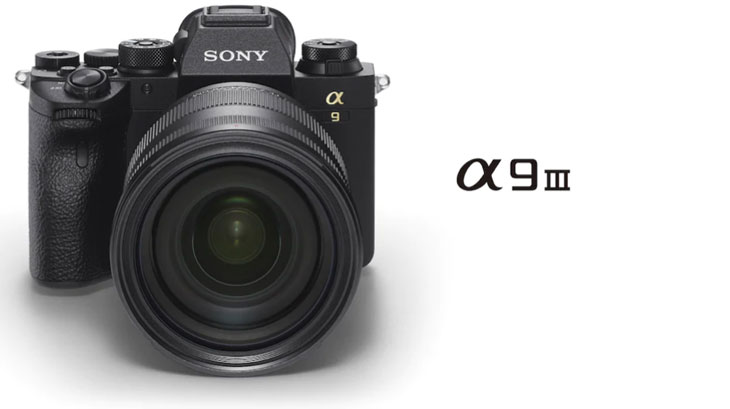
What we have seen in the past, 10 to 15 days before any official announcement of a Sony camera, leaked images and a full set of core specifications are generally available all over the web via the rumor mills. As of November 3, there is no concrete information available related to the upcoming camera, nor any leaked images. It indicates that there is a huge possibility that the A9 Mark III camera is not coming on November 8. And that’s why Rumor mills are saying that A9 III will delay, see more details below
According to the latest rumors, the Sony A9 Mark 3 camera announcement may get delayed, and the next possible date is sometime around January 2024. The rumored specifications and announcement date of the Sony A9 Mark III camera are as follows:
Sony A9 III rumored specification
- 33 megapixel full-frame stacked sensor
- 40 fps 12-bit raw
- 30 fps 14-bit raw
- 4K 24/25, 30, 50/60 fps
- 1080 24/25, 30, 50/60, 100,120 fps
- No 8K video
- No mechanical shutter
- Sony A1 design and ergonomics
- Price: $4,498
- November 8, 2023 announcement (expected to arrive in Jan 2024*)
If you look at the price of the camera then for sure the camera price is higher than the competition, compared to the specs of the Nikon Z8 camera the overall rumored specs of the Sony A9 III, that we see right now look slightly inferior without a doubt.
We were expecting at least the introduction of a 50-megapixel sensor to compete against Z8 of Sony Alpha A1 in the body of the Sony A9 Mark III with some limitations (to protect the sales of the Sony Alpha A1 camera). At least with the 50 MP sensor and advanced Dual Bionz X processor, the camera will be able to compete with the Nikon Z8 camera.
Our expectations with the Sony A9 III
- 50MP Full-Frame Exmor RS BSI CMOS Sensor
- Up to 60 fps Shooting, ISO 50-102400
- 8K 30p and 4K 120p Video in 10-Bit
- 3.7 m-Dot EVF (Blackout free)
- 759-Pt. Fast Hybrid AF, Real-time Eye AF
- 5-Axis SteadyShot Image Stabilization
- Dual CFexpress Type A/SD Card Slots
Share your thoughts in the comment box below
Follow us on our social pages FACEBOOK | TWITTER | INSTAGRAM, If you have time –>see more Sony Alpha Rumor
source SAR website
By admin, on October 12th, 2023
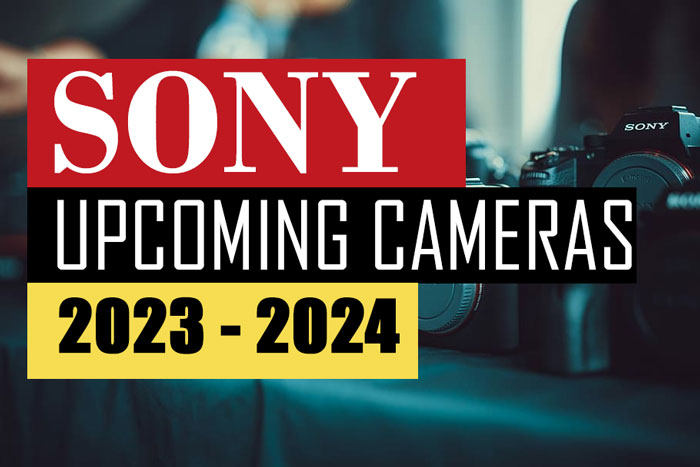
We have selected some cameras that are expected to arrive in the remaining months of 2023 and the year 2024. Let’s begin with the list.
1. Sony A9 III
The first camera that we are expecting in 2023 is the Sony A9 III. We have strong rumors that the A9 III camera is expected to be released soon. However, there is still confusion about the resolution of the camera. Earlier, we had information that the camera is coming with a 33-megapixel sensor. Now, we are hearing rumors related to a 45 MP full-frame CMOS sensor, so we have to wait for further confirmation.
Sony A9 III Specification [Latest Rumored]
- 44MP – 50MP
- 8k60
- 4k120p
- 26fps
People are expecting a 45 MP to 50 MP high-resolution sensor inside the upcoming A9 Mark III camera. The simple reason is this: since Nikon has raised the competition level they have announced the Nikon Z8 camera with the same sensor that we have seen in the Nikon Z9, with almost the same degree of core specifications. To compete against the Nikon Z8, Sony’s A9 III camera is also expected to arrive with the same sensor that we have seen in the Sony Alpha 1.
Sony A9 III Specification [Rumored]
- 50MP Full-Frame Exmor RS BSI CMOS Sensor
- Up to 60 fps Shooting, ISO 50-102400
- 8K 30p and 4K 120p Video in 10-Bit
- 3.7 m-Dot EVF (Blackout free)
- 759-Pt. Fast Hybrid AF, Real-time Eye AF
- 5-Axis SteadyShot Image Stabilization
- Dual CFexpress Type A/SD Card Slots
The above specification we have published back on May 2023 – Sony A9 III Coming with 50mp Sensor
The launch date is near and very soon we will have a detailed set of core specifications of the upcoming camera along with its images.
2. Sony A7S IV
The next camera on our list is the Sony A7S IV. The Sony A7S IV is set to be the successor of the Sony A7S III camera. Leaked information suggests that this camera may have a bump in resolution and we may witness a 24-stacked CMOS sensor inside the A7S IV, with an improvement in video performance.
Sony A7S IV Rumored Specification
- 12 Mp / 24 MP Full frame sensor
- 4k Videos upto 240FPS 10-Bit
- 16-bit Raw Video Output, S-Cinetone
- BIONZ XR & AI Processing Unit
- AI-Based Real-Time Tracking AF System
- 8-Stop 5-Axis Image Stabilization
- 9.44m-Dot QXGA OLED EVF
Even if it doesn’t arrive with a higher resolution sensor, there is enough room for other upgrades like introducing an artificial intelligence chip inside the camera, introducing an advanced Bionz XR image processor, and 4K recording up to 240 frames per second. These are the set of improvements we are expecting from the upcoming A7S IV camera.
3. Sony Alpha A1 Mark II
The next camera in our lineup is the Sony Alpha 1 Mark II, which is set to arrive in the early months of 2024. We have a lot of space for improvement. Even if the sensor image remains the same, the artificial intelligence chip still needs to be implemented in this camera.
We are expecting as per the initial hints we have the sensor will remain the same as the Sony Alpha A1 camera, although despite that will have major updates in the core specification of the camera after the introduction of the AI chip.
4. Sony A7 V
The next full-frame flagship camera on our list, which is expected to arrive in Q3-Q4 of 2024, is the Sony A7 V camera. The Sony A7 IV camera is now pretty old and as you can see, most of its core specs are now available in the Sony A7C Mark II camera.
Although we are not expecting a major jump in the camera’s resolution, without upscaling the sensor there is enough room to update the camera’s core specification with a new artificial intelligence chip. Apart from AI Chip, we are also expecting a proper heat management system to be introduced in the new body compared to the previous generation of the Sony A4 camera. With the help of these two, the cameras will touch new heights and raise the competition bar.
Sony A7 V Rumored Specification
- 33 MP / 42 MP Resolution (Unconfirmed)
- BIONZ XR & AI Processing Unit
- AI-Based Real-Time Tracking AF System
- 4K 16-Bit Raw Output; S-Log3/S-Cinetone
- 8-Stop 5-Axis Image Stabilization
- Dual CFexpress Type A/SD Card Slots
But as per the initial hints we have received from the past, there are several prototypes of the Sony A7 Mark V camera with a 42-megapixel full-frame CMOS sensor. If this information is true, then for sure, the next Sony A7 Mark V camera may have a major jump in the core specs of the camera including a higher resolution sensor, the introduction of an artificial intelligence chip, and an improved Image Processing Unit.
5. Sony ZV-E10 II
When it comes to APS-C camera updates, the first camera that comes to my mind is the Sony ZV E10, contributing more than 50% of total Sony alpha Camera sales it is one of the most popular Sony cameras of 2022 and 2023. The Sony ZV-E10 II camera is expected to arrive sometime in 2024 and as per the latest rumors we have, entry-level bodies like ZV E10 II are also expected to be loaded with Sony’s latest artificial intelligence chip and a BIONZ XR image processor which will result in a major upgrade in the core specification of the camera.
Sony ZV-E10 II Rumored Specification
- 26MP / 24MP Exmor R APS-C BSI CMOS Sensor
- BIONZ XR & AI Processing Unit
- UHD 4K 120p / FHD 240p / 10-Bit 4:2:2
- 5-Axis Pixel-Level Image Stabilization
- Arrival on 2024
Sony ZV E10, the camera is expected to arrive sometime in 2024 and as per the latest rumors we have entry-level bodies like the ZV E10 is also expected to be loaded with Sony’s latest artificial intelligence ship and UPSC killed image processor which will result in a major upgrade in the Core specification of the camera
We will update this post as soon as we get any latest updates about upcoming cameras from Sony
Follow us on our social pages FACEBOOK | TWITTER | INSTAGRAM, If you have time –>see more Sony Alpha Rumor
|
KEEP THIS BLOG ALIVE - Support New Camera Buy Canon Lenses, Buy Music CD or Digital Camera at amazon it helps this site, and you do not pay anything extra, it is just a way to help support this site.

|





























